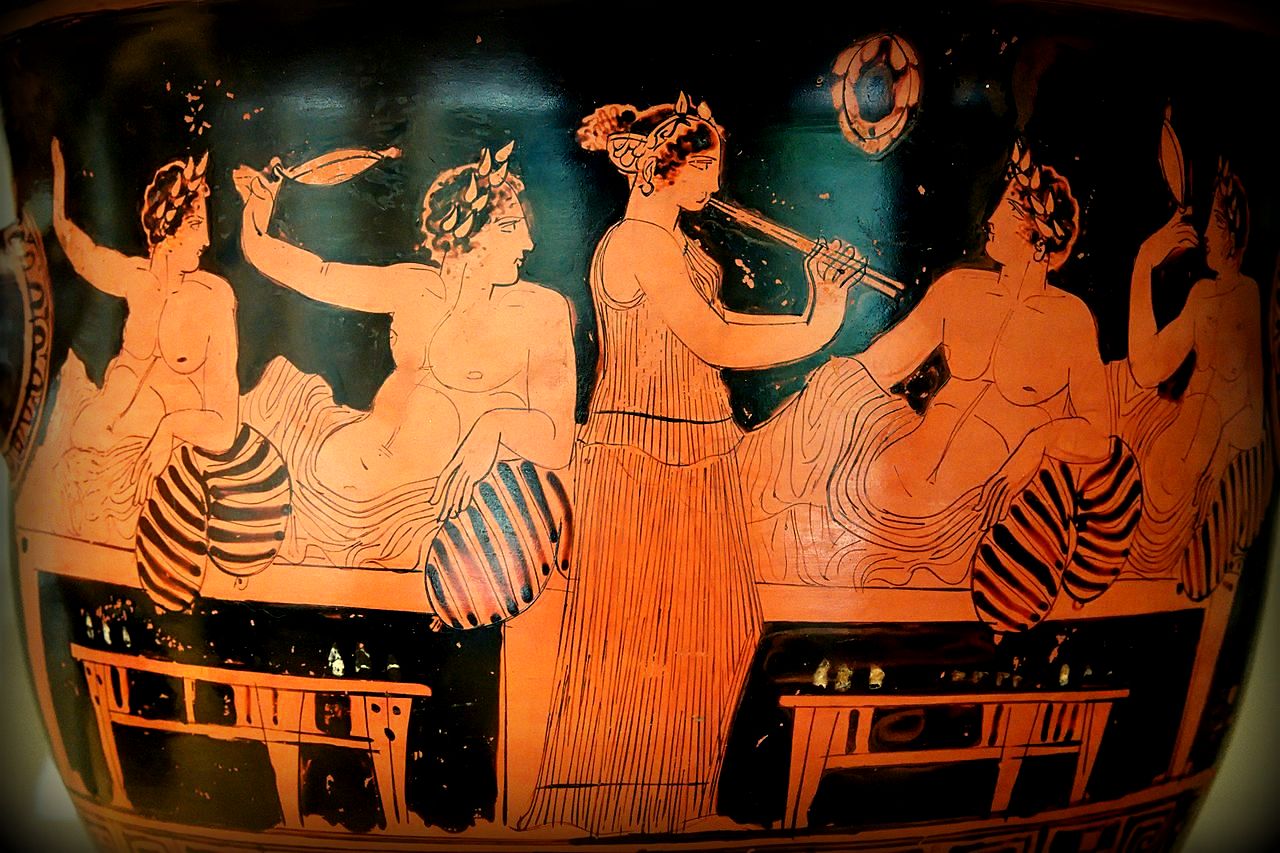Ridiculing Cult and Satirical Obscenity in Ancient Literature: Iolaos & the Satyricon
Ancient literature was never as “polite” as many imagine. Long before modern social media debates about cancel culture or artistic freedom, writers like the anonymous author of Iolaos and Petronius, the mind behind the Satyricon, were already exploring the tension between sacred ritual, sexuality, and satire — themes that still inspire the Eros & Aphrodite philosophy today.
Iolaos – The Greek Comic Novel that Mocked Rituals
Iolaos is a rare example of a Greek comic novel that mixed cultic mysticism with absurd humor and erotic disguise. The hero and his companion dress as the Galli, the eunuch priests of Cybele, parodying one of the most solemn Eastern cults of the Graeco-Roman world. Through this outrageous deception, the author exposes how religious devotion can easily become performance — a theme that feels strangely familiar today in a world obsessed with appearances and social signaling, much like the creative satire expressed in our Entertainment experiences.
The story’s humor is indecent, its tone provocative, but beneath the burlesque there’s a warning about cultural imitation, decadence, and imported dogma — not unlike today’s discussions about how foreign ideologies and online trends reshape local traditions. Similar reflections can be found in our essays on Philaenis the Samian and Obscenity in Action – The Old Comedy.
Petronius’ Satyricon – Ancient Rome’s Dark Comedy
A century later, Petronius, Nero’s arbiter elegantiae, wrote the Satyricon, an extravagant mix of prose, poetry, and scandal. Its heroes — Encolpius, Giton, and Asciltus — wander through a chaotic Roman landscape of luxury, vulgarity, and moral confusion. Scenes like Trimalchio’s Dinner, where nouveau-riche millionaires flaunt tasteless wealth, could easily describe any modern influencer dinner party — the same intersection of decadence and display recreated today in exclusive villas and yachts across Greece.
The Satyricon’s grotesque orgies and absurd humiliations are not just shock value; they mirror a society where pleasure replaces purpose and satire becomes survival. It’s the same irony that drives today’s pop culture — the idea that mocking excess is the only way to stay sane inside it. It’s also the satirical energy that inspires curated experiences such as our Bachelor Party concepts blending humor, art, and celebration.
From Ancient Obscenity to Modern Commentary
Both Iolaos and The Satyricon use obscenity not for titillation, but as a mirror for hypocrisy. They remind us that laughter, even when indecent, is often a form of truth-telling. Modern comedy and cinema still walk that same tightrope between offense and honesty — think of stand-up comedians, political satire shows, or avant-garde performance art, the same creative daring we channel in our live performances and Aphrodisian Private Chef experiences.
Where ancient writers used sacred parody, today we have memes, shock humor, and viral content to expose our cultural contradictions. It’s the same mechanism, wrapped in a different costume, echoing through the Eros & Aphrodite Journal.
Eros, Art, and the Human Condition
For Eros & Aphrodite, these ancient works are not relics; they are reminders that art and desire have always challenged boundaries. Whether through literature, performance, or experiential events, the point remains: eros and satire are acts of truth. They strip away illusions and reveal how societies — ancient or modern — negotiate power, beauty, and morality.
Discover how ancient satire inspires our modern experiential design at Eros & Aphrodite Entertainment, explore our philosophy blending art, eros, and cultural heritage, or experience it firsthand through our exclusive venues and yachts and private chef dining concepts.
